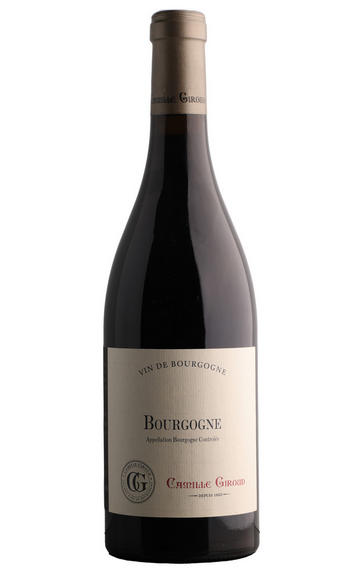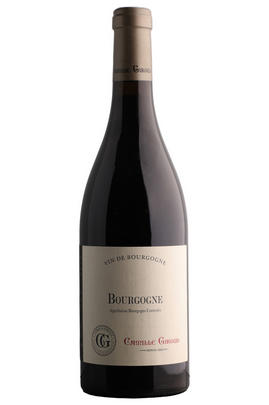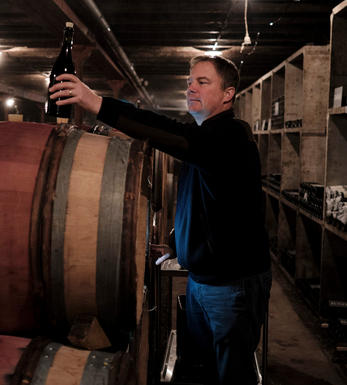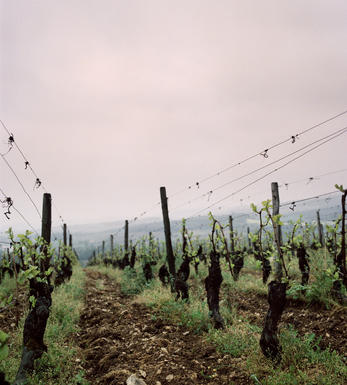
2021 Bourgogne Rouge, Camille Giroud

Critics reviews
Mid purple, nutty nose, perhaps need freshening. Tight dark red fruit, medium bodied, quite high acidity. This needs racking and a dose of sulphur. A second sample has a longer finish on the fruit, but the wine is not currently in a suitable condition to rate.
Jasper Morris MW, Inside Burgundy (January 2023)
The 2021 Bourgogne Rouge has a welcome blueberry, pine needle and red cherry scented bouquet. The palate is sweet and slightly candied, moderate depth with a smooth yet slightly monochromatic finish.
Head winemaker Carel Voorhuis is unfortunately ill on the day of my visit, so commercial director Aurélien Bigot takes me through their wines. “We started the picking on 21 September until 8 October, during which we sorted out around 15-20% of diseased/mildew affected bunches,” Bigot tells me. “There is less crop, around half for the Premier and Grand Crus. Also, the duration of cuvaison was shorter with a slightly lighter maceration in order to not extract unwanted flavours. For the élevage, we used fewer new barrels, around 20-30% in general, with a little more for the whites. For example, on the Chassagne Tonton Marcel, we just have a feuillette. At the moment, we don’t know the time of bottling; the whites will probably be at the beginning of next year.”
Camille Giroud’s 2021s reflect the inconsistencies of the vintage. Relying on contracted fruit leaves, even for a skilled winemaker like Voorhuis at the mercy of vineyard managers, is risky in such a difficult growing season as 2021. For example, I feel that the Charmes-Chambertin and Chambertin leave much to be desired; it’s skinny and a bit mean, whereas their Clos Vougeot is wonderful. Essentially, it’s a mixed bag through no fault of the team under Voorhuis, and they’ll be back much stronger next year.
Drink 2023 - 2026
Neal Martin, Vinous.com (January 2023)
About this WINE

Maison Camille Giroud
Established in 1865, Maison Camille Giroud has a rich heritage rooted in Burgundy’s winemaking tradition. Initially a specialist négociant, they sourced wines from esteemed growers across the renowned Côte d’Or region, ageing them meticulously in their cellars for decades to achieve peak maturity.
In 2001, a consortium, including Napa Valley winery owner Ann Colgin and wine investors, took over, aiming to blend tradition with modern techniques and a terroir-driven approach. This led to innovations, like wooden presses and open vats, under the dynamic winemaker David Croix.
Most wines continued to be crafted from carefully selected grapes, many from old vines. Their commitment to natural winemaking practices, including native yeast fermentation and minimal intervention, set them apart.
In 2016, Carel Voorhuis continued the legacy of crafting pure, terroir-driven wines, maintaining Maison Camille Giroud’s reputation for excellence in Burgundy.

Bourgogne Rouge
Bourgogne Rouge is the term used to apply to red wines from Burgundy that fall under the generic Bourgogne AOC, which can be produced by over 350 individual villages across the region. As with Bourgogne Blanc and Bourgogne Rosé, this is a very general appellation and thus is hard to pinpoint any specific characteristics of the wine as a whole, due to the huge variety of wines produced.
Around 4,600 acres of land across Burgundy are used to produce Bourgogne Rouge, which is around twice as much as is dedicated towards the production of generic whites.
Pinot Noir is the primary grape used in Bourgogne Rouge production, although Chardonnay, Pinot Blanc, Pinot Gris and in Yonne, César grapes are all also permitted to make up the rest of the wine. These wines tend to be focused and acidic, with the fruit less cloying than in some New World wines also made from Pinot Noir, and they develop more floral notes as they age.
Although an entry-level wine, some Bourgogne Rouges can be exquisite depending on the area and producer, and yet at a very affordable price.

Pinot Noir
Pinot Noir is probably the most frustrating, and at times infuriating, wine grape in the world. However when it is successful, it can produce some of the most sublime wines known to man. This thin-skinned grape which grows in small, tight bunches performs well on well-drained, deepish limestone based subsoils as are found on Burgundy's Côte d'Or.
Pinot Noir is more susceptible than other varieties to over cropping - concentration and varietal character disappear rapidly if yields are excessive and yields as little as 25hl/ha are the norm for some climats of the Côte d`Or.
Because of the thinness of the skins, Pinot Noir wines are lighter in colour, body and tannins. However the best wines have grip, complexity and an intensity of fruit seldom found in wine from other grapes. Young Pinot Noir can smell almost sweet, redolent with freshly crushed raspberries, cherries and redcurrants. When mature, the best wines develop a sensuous, silky mouth feel with the fruit flavours deepening and gamey "sous-bois" nuances emerging.
The best examples are still found in Burgundy, although Pinot Noir`s key role in Champagne should not be forgotten. It is grown throughout the world with notable success in the Carneros and Russian River Valley districts of California, and the Martinborough and Central Otago regions of New Zealand.


Buying options
Add to wishlist
Description
This is made from fruit sourced from the Hautes Côtes de Beaune, a rather good single vineyard in Mercurey and some of the low-lying parcels in Pommard and Volnay. The wine is light in colour, but pure with an appealing crunch, and the palate fills more than expected. The proportion from Mercurey adds dimension.
Drink 2023 - 2026
Berry Bros. & Rudd
wine at a glance
Delivery and quality guarantee